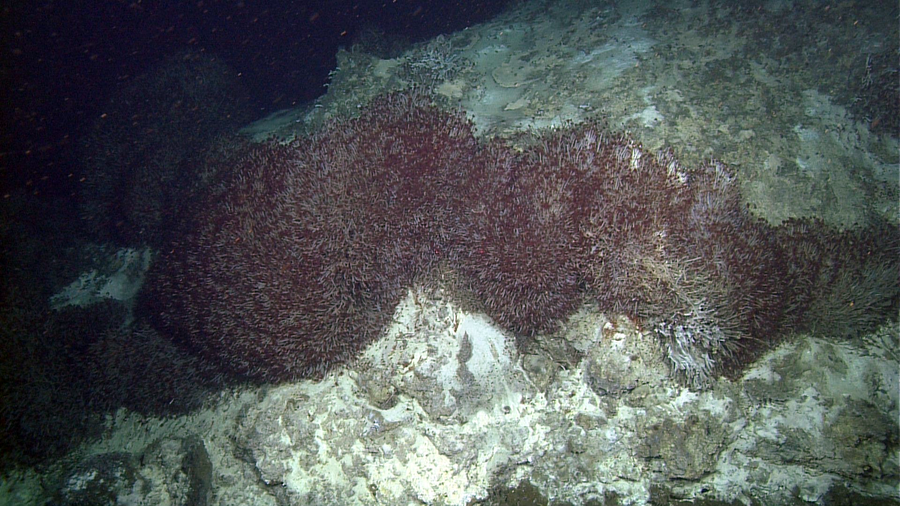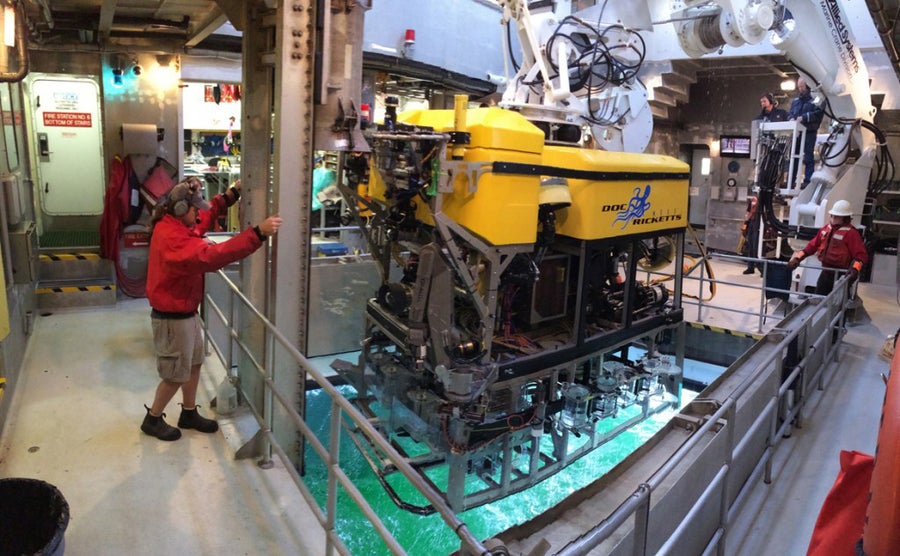Two years ago, Shana Goffredi raced to the control room of the R/V Western Flyer, a 117-foot-long research ship in the Gulf of California. Television monitors onboard the vessel displayed what looked like an alien world near the ocean bottom, and Goffredi wanted to get a better look. On screen were thousands of tiny orange tube worms and dozens of other animals, some of which were new to science. The bizarre habitat gleamed in the lights of an underwater robotic probe as it explored the environs of a seafloor spring spewing water at superhot temperatures—known as a hydrothermal vent. What struck Goffredi, a marine biologist at Occidental College, along with the 10 other scientists onboard was how different the life-forms at this site, called the Pescadero Basin, looked from those at a neighboring site. Some 75 kilometers away in the same gulf, vents within the Alarcón Rise also hosted masses of tube worms, only they were blood-red in color. Overall, the two sites shared only seven out of 61 animal species identified. “There’s nowhere else in the world where you have this dramatic difference of species at this close of a place,” says Shannon Johnson, an MBARI researcher who was also onboard that day.
Recent research has hinted that neighboring hydrothermal vents might host different arrays of life, but the scene in the Gulf of California, as Goffredi, Johnson and their colleagues described it in the July 26 Proceedings of the Royal Society B (pdf),provides one of the first dramatic examples of this trend. Goffredi’s team thinks the local geology and chemistry of each vent effectively selects for a rare and specialized animal community that may only be able to live at that site.

Tubeworms cling to a vent in the Pescadero Basin. Credit: © 2015 MBARI
On supporting science journalism
If you're enjoying this article, consider supporting our award-winning journalism by subscribing. By purchasing a subscription you are helping to ensure the future of impactful stories about the discoveries and ideas shaping our world today.
The search for these hot waters began in 2012 when MBARI scientists sent a missile-shaped underwater drone to map the Pescadero Basin following a discovery of chemical anomalies that suggested the presence of vents. Although the drone was able to find them, it lacked instruments that could image any animal communities. So, in April 2015 MBARI scientists sent down an SUV-size remotely operated vehicle to take footage of the vents and collect samples of the surrounding seawater, mud, rocks and animals. It was during this cruise that Goffredi and Johnson found themselves glued to the incoming images. And they were not alone. “All of us were out of our seats, taking pictures of the screens with our phones,” Johnson says. “We looked like a bunch of tourists!”
Although it was immediately evident to everyone onboard that the animals found at vents within the Pescadero Basin were radically different from those found at the neighboring Alarcón Rise, scientists could not immediately explain why. Riftia, the blood-red tubeworms seen at the Alarcón Rise, are known to travel great distances. Not only have they been spotted in the Gulf of California, they have also been found in the Galápagos Archipelago and near Easter Island. Although that in itself was initially a mystery, scientists now know these animals release tiny larvae that get carried by ocean currents to different vents, where they settle and form a new colony. Still, their exact movements remain unknown. In recent years it was thought that Riftia and other vent organisms might migrate in a stepwise manner, moving from one vent to the immediate neighboring vent and so on. But the new work by Goffredi’s team suggests the larvae will not settle for any old vent. “They're kind of like Goldilocks,” Johnson says. “They have to find the right environment to be comfortable and thrive.”
In fact, the itinerant next generation might die if it encounters any vent with radically different geology and chemistry from its home vent. Larvae can travel great distances, but they might have to skip neighboring vents should they be, say, too hot or too cold, and venture farther to seek a suitable home. In seas that are well populated with vents that will not be a problem, but in a sparsely populated area it gets trickier—and every vent becomes more critical, says Cindy Van Dover, a deep-sea biologist and director of the Duke University Marine Laboratory, who was not involved in the discovery.

MBARI’s remotely operated vehicle Doc Ricketts is launched into the “moon pool” on the research vessel Western Flyer before before diving deep into the ocean. Credit: Mariah Salisbury © 2015 MBARI
Not every expert agrees with the biogeochemistry hypothesis. Richard Thomson, a physical oceanographer at the Institute of Ocean Sciences in British Columbia who also did not take part in the work, says that deep-sea currents could be the driving factor behind the extreme variations in biology. Perhaps currents rushing down into the Pescadero Basin are so strong that the habitat is only suitable to the hardiest tubeworms. Or maybe the true culprit is time. Tim Shank, a deep-sea biologist at Woods Hole Oceanographic Institution in Massachusetts, suggests a site might not contain animals for the simple reason that they have not arrived yet. Shank compares the vents with a forest. If you cut it down, grasses and other shrubs will grow long before new trees do. That does not mean those trees cannot grow in that forest. Still, Shank thinks, because the diversity between the two sites is so vast, it is likely geochemistry plays the largest role. He was not part of the study but is excited to see further research in the area that can better develop that hypothesis.
Regardless of the cause of the distinct populations at the vents, the new research suggests these animal populations might be more fragile than suspected, which raises a looming concern. Several companies are applying for permits to mine the Gulf of California seafloor for precious metals, including gold and platinum. Mining machinery could destroy some of these worlds in the process of generating high returns on ores. But for Van Dover, that value cannot compare with the richness of the thriving animal communities inhabiting Earth’s hydrothermal vents. “When I look at the pictures of these beautiful, rich populations and just imagine someone happily going in and scraping it clean, that seems to me pretty tragic,” she says. And mining companies could pose a risk not only to a single vent colony, but to ones farther up and down the ridge. Because these animals rely on vents as stepping-stones to establish new colonies, eliminating one vent might stop a species in its tracks. “If you blew the critical habitat, then that’s going to be a problem for that species,” Van Dover says. No scientist yet knows which habitats are critical for vent organisms or how many vents can be destroyed before the connectivity with other vents along the ridge is lost. But if we break this chain, Van Dover says, we cannot fix it.
